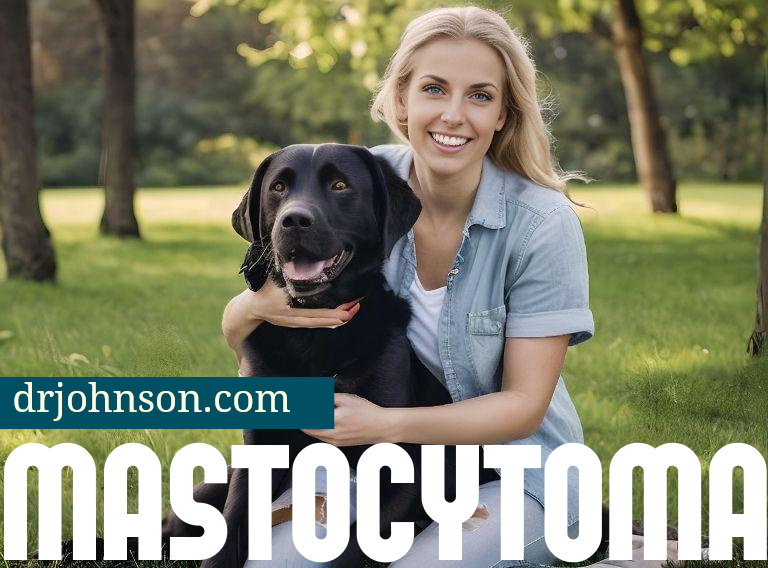Odd things, in Veterinary medicine when a Mastocytoma shows up. Let me catch you up.
Here’s some highlights if you’re looking at a Mastocytoma / Histiocytoma diagnosis with a pet of your own:
- Dog seldom die of Mastocytoma.
- Dogs seldom die of Histiocytoma
- Histiocytomas and Mastocytomas often appear identically.
- Mastocytomas are “Graded” on a scale running from 1 to 3.
- Some Mastocytomas are like Millennials and basement dwelling videogamers who are happy to achieve thirty years old living unmarried in their parents basement. On the other hand, some Mastocytomas are like Elon Musk and spread like the culturally co-opting phrase “I celebrate Ramadan” at an “inclusive” post menopausal white woman dinner party.
- Chemotherapy and radiation have no impact on whether your dog will have another Mastocytoma. About thirty percent of dogs sprout another Mastocytoma whether you spend $12,000-$21,000 on an oncologist, or NOT.**

For starters, you can’t usually tell by looking at a “mass” whether it’s a Mast Cell Tumor (mastocytoma) or a Histiocytoma. (Same “cancer” except it’s made of renegade Histiocytes).
Nearly round, raised pink ‘mass’ that sometimes bothers the dog, sometimes changes in size from day to day and usually drops the hair growing on it. They look like someone tried to graft a strawberry onto the skin.
So it’s not REALLY a visual diagnosis. But it tries to be.

When you suspect a Mastocytoma I like to remove the mass with the widest margins I can still close safely. I like to remove the mass-primary and also go a little deeper and take whatever subcutis I can, usually there’s a layer of fat you can take without consequence to the dog or the surgery. When I get my results back and they say “narrow margins” I can sleep at night knowing I took it a step further and got “more”
What exactly IS a histiocytoma or mastocytoma? Apparently it’s a giant “party” of cancerous / renegade inflammatory cells that have aggregated in one location which creates the equivalent of a mass. The argument might maintain that ONE mastocyte went ‘crazy’ and formed a tumor with a zillion clones of itself. Sometimes I wonder if these “masses” of cancerous mastocytes are actually “working on something” we don’t understand. Like a ‘dog pile’ instead of one cell creating a mass of it’s own replicates. Ahhhhhh who cares.
For the most part, “gone is gone”.
Histopathology of one Mastocytoma reflects “grading” and the typical biopsy report: 2024-04-26mastocytoma
I recommend a biopsy of these masses. A histopathologist can look at the mass under a microscope with special stains and tell us what kind of tumor we have, and then they can GRADE IT. And a higher grade mass is harsh and fast. A lower grade mass (Grade I for example) is like that kid that never launches because he’s on his videogame every spare moment. They don’t grow, fast if it all and they don’t move around. They stay right where they started. You can remove them without a trace.
These days: Franchises and corporate veterinary environments have found a lucrative, chemo/radiation approach to Mastocytomas. I haven’t seen one case where it made a difference over just leaving the dog alone after resection. **
If your dog has something that looks like a Histiocytoma or Mastocytoma, you can try smearing it with some hydrocortisone or giving some antihistamines to see if the cells can be ‘dismissed’ and disperse. In all likelihood, removal is a better option, cutting wide and going deep. Interpret the biopsy with “How we will handle potential future masses or ‘growbacks'” and then decide if you want to pay for oncology or not. Chemo/Radiation has not made a difference to the pets we sent out for it, or for those owners who didn’t want it. (And there are a LOT of those who can’t afford it.) And it’s from these cases WITHOUT chemo/radiation that we see in clinical-practice that even without it, dogs do “pretty well” with high odds of survival.
[ps2id id=’why-chemo’ target=”/]Okay so here is how that goes. In the eighties and nineties we removed Mastocytomas and held our breath. 20-30% of dogs got another Mastocytoma sooner, or often: Later. Which we’d remove and nobody died.
More recently, it’s been far more profitable to do chemotherapy or radiation on the Mastocytoma cases especially if they are high grade. And then: Over the years subsequent: 20-30% of dogs get another Mastocytoma sooner, or often: Later.
Which leaves ME wondering why we’re doing chemo and radiation on all the Mastocytomas if the outlook for recurrence is clinically the same?

